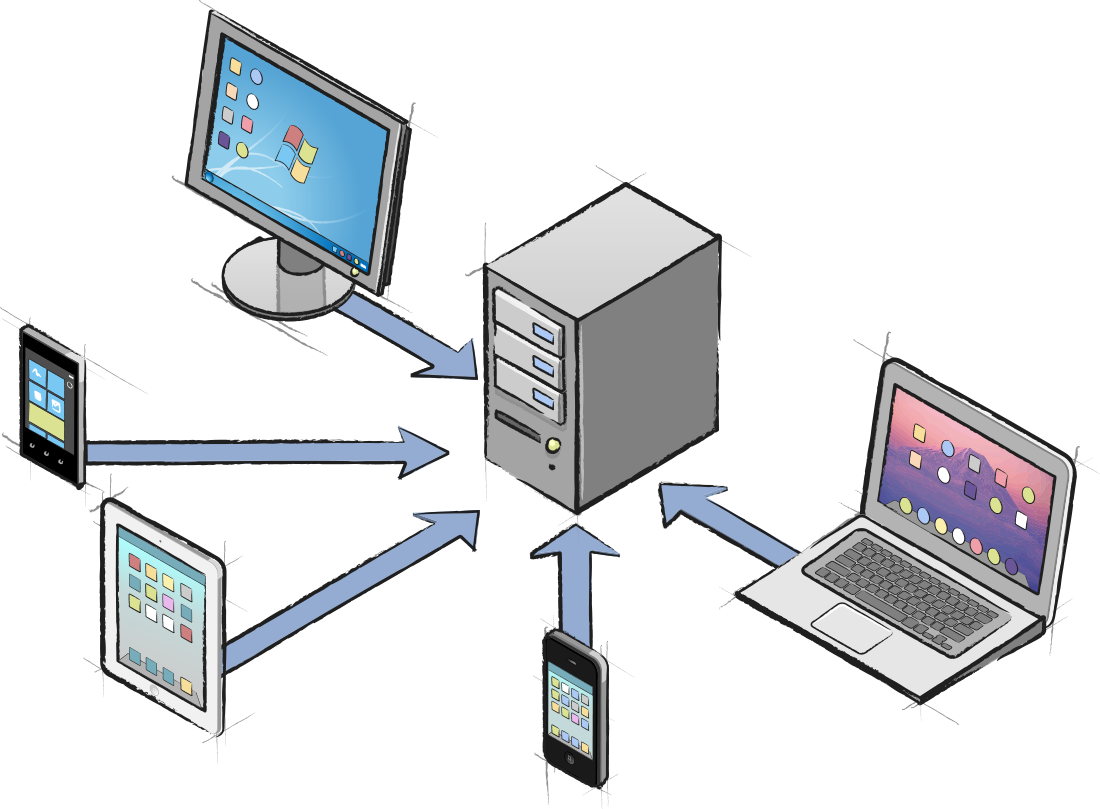[Service]
public class MyService
{
[ServiceMethod]
public string DoSomethingCool()
{
// Do something cool
}
}[Service]
MyService = public class(Service)
[ROServiceMethod]
method DoSomethingCool: String;
begin
// Do something cool
end;
end;@Service public class MyService {
@ServiceMethod public func DoSomethingCool() -> String {
// Do something cool
}
}<Service> _
Public Class MyService
Inherits Service
<ServiceMethod> _
Public Function DoSomethingCool() As String
' Do something cool
End Function
End Class[ROService]
TMyService = class(TROService)
[ROServiceMethod]
function DoSomethingCool: String;
end;What is Remoting SDK?
In today's day and age, most apps no longer live in isolation – they need to communicate with a server component, or "the cloud" – to get updated data, exchange information between users of the app, or the like.
Remoting SDK is a suite of libraries that lets you build this communication into your apps, easily. It covers both sides of the coin:
Writing your server-side code and publishing it so it is accessible across the network.
Connecting and talking to those servers, from the client applications your end users are using.

Servers can be written in Delphi, C++Builder and .NET (C#, Visual Basic.NET, Swift, Oxygene, and Java).
They can be deployed to Linux, Windows and macOS servers, including cloud hosting providers such as Amazon Web Services or Azure, and of course self-hosted servers – giving you a wide range of options and flexibility.
Remoting SDK makes writing servers easy, without requiring a lot of expertise in networking APIs and technologies. Getting a server up and running can be a matter of, literally, a couple of lines of code. (See our examples above).
You implement your server logic, Remoting SDK can take care of the rest.
But if you do need more control and know what you are doing, Remoting SDK exposes all the options and flexibility you need to really fine-tune your server's operation.
Clients are applications that talk to your servers, and Remoting SDK allows you to add client functionality to apps written in just about any modern programming tool, and for all current platforms:
Cocoa developers can use our native Cocoa frameworks from Swift, Objective-C, Oxygene or RemObjects C#, right inside Xcode or Fire. Version 9 and later have been newly optimized for Swift.
Windows developers can use Remoting SDK directly from .NET (be it C#, Oxygene, Swift, Java or Visual Basic) or Delphi and C++Builder to add client connectivity to their apps. Of course the .NET library works with Xamarin, as well.
Android and Java developers can use our native Java library to connect applications to their servers.
And finally, there's even a lightweight JavaScript client layer for web developers to talk to servers directly from a rich web site, or anything else that runs JavaScript.
For each platform and development tool, the Remoting SDK client library is implemented natively and completely from scratch – there are no compatibility layers, and the API feels native and natural everywhere.
You can learn about more each of our five client implementations here.
